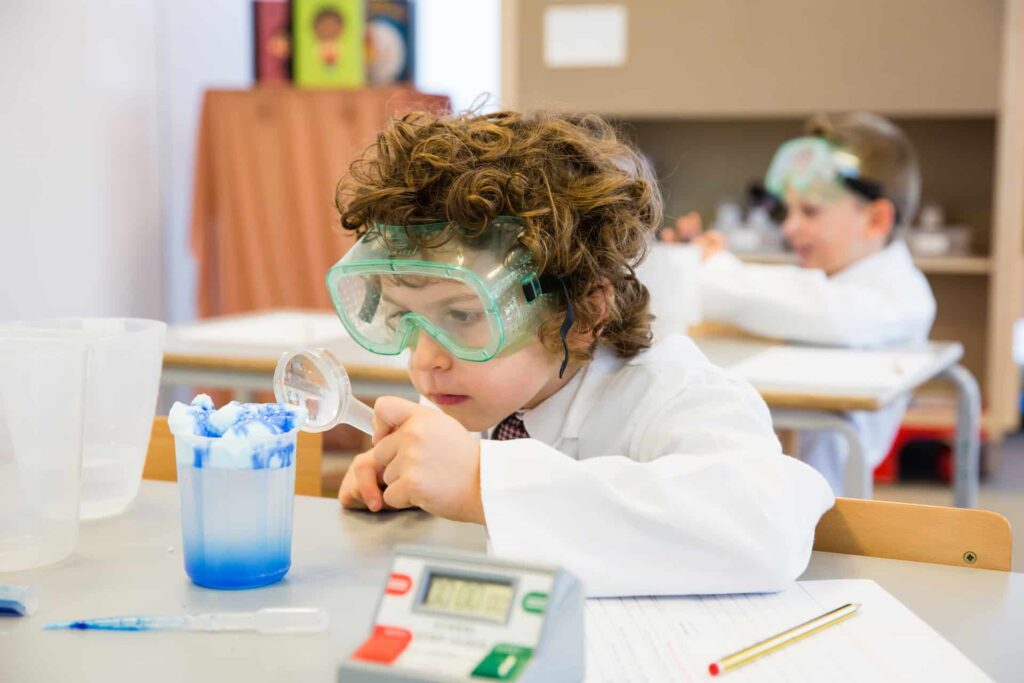In today’s fast-paced world, fostering creativity and curiosity in children is essential for their overall development and future success. Educational gifts and outdoor activities play a crucial role in igniting a child’s imagination, enhancing problem-solving skills, and promoting physical health. This article explores effective strategies for selecting educational gifts that nurture creativity, encourages active outdoor play, and highlights the importance of STEM education. By understanding these elements, parents and caregivers can provide enriching experiences that support their child’s growth and well-being.
Table of Contents
Unleash Creativity with Educational Gifts
In today’s fast-paced world, fostering creativity in children is more crucial than ever. One of the most effective ways to do so is through educational gifts that inspire imagination and enhance learning. These gifts not only entertain but also equip children with essential skills and knowledge that will serve them throughout their lives. Let’s explore why educational gifts are the key to unlocking creativity and how to choose the perfect ones.
The Importance of Creative Play
Creative play is vital for a child’s emotional, cognitive, and social development. Engaging in activities that stimulate imagination allows children to express themselves freely, explore new ideas, and develop critical thinking skills. Educational gifts can serve as tools to harness this creativity. By merging fun with learning, these gifts encourage kids to think outside the box and solve problems creatively.
Types of Educational Gifts That Spark Creativity
When it comes to selecting educational gifts, there’s a wide array of options designed to foster creativity in children. Here are some categories to consider:
- Art Supplies: From high-quality colored pencils to watercolor sets, providing children with art supplies allows them to express their artistic side. A simple sketchbook can become a canvas for their imagination.
- Building Toys: Building sets like LEGO or magnetic tiles encourage spatial awareness and problem-solving. These toys also help kids visualize concepts in three dimensions, enhancing their engineering skills.
- Science Kits: Fun and interactive science kits introduce kids to the wonders of the natural world and scientific principles, sparking curiosity and fostering a love for STEM.
- Musical Instruments: Instruments like keyboards, guitars, or even simple percussion tools can inspire children to create music, thus merging auditory learning with creative expression.
- Books and Storytelling Materials: Books expand horizons and ignite imagination. Interactive storytelling kits encourage kids to create their own narratives, blending literature with personal creativity.
Choosing the Right Educational Gift
To effectively unleash a child’s creativity through educational gifts, consider the following factors:
- Child’s Interests: Choose gifts that align with the child’s hobbies and passions. Whether they are drawn to art, science, or music, ensuring that the gift resonates with their interests is key.
- Age Appropriateness: Always check the recommended age on educational toys and gifts. This ensures safety and that the product is suitable for their developmental stage.
- Quality and Durability: High-quality materials can withstand active play, offering better value and enabling children to explore their creativity without concern for breakage.
- Encourage Exploration: Look for gifts that encourage experimentation and exploration, enhancing the learning experience and promoting innovative thinking.
The Long-Term Benefits of Creative Educational Gifts
Investing in educational gifts that promote creativity not only captivates children in the moment but also has far-reaching benefits. Creativity fuels innovation, critical thinking, and adaptability—qualities that are invaluable in the ever-evolving world. Research has shown that children who engage in creative play are more likely to excel in various academic areas and develop strong emotional intelligence source. These gifts lay a foundation for lifelong learning, preparing them to tackle future challenges with flair.
In conclusion, the right educational gifts can play a pivotal role in nurturing creativity in children. By choosing toys and materials that blend fun, learning, and imagination, you provide your child with the tools to explore their interests and develop essential life skills. Get ready to spark a world of creativity and discovery that lasts a lifetime!
Encourage Outdoor Adventures with Active Play
Active play is more than just fun; it’s essential for children’s overall development. By engaging in outdoor adventures, children can improve various skills, from physical coordination to social interaction. It’s crucial for parents and caregivers to actively promote forms of play that encourage adventure and exploration. Here’s how you can inspire your little ones to embrace the great outdoors and enjoy active play.
The Importance of Outdoor Play
Outdoor adventures provide a broad range of benefits for children. Not only does active play help foster a healthier lifestyle, but it also plays a critical role in boosting cognitive development. Here are some reasons why outdoor play is vital:
- Physical Health: Outdoor play helps develop strong bones and muscles, enhances cardiovascular fitness, and benefits overall health.
- Mental Well-being: Engaging with nature reduces stress and anxiety, promoting a sense of calm and improving mood.
- Social Skills: Playing with peers outdoors helps children learn important social interactions, teamwork, and conflict resolution.
- Creativity and Imagination: The unstructured nature of outdoor play encourages children to use their imagination and creativity.
Types of Outdoor Activities to Promote Active Play
To encourage your children to engage in outdoor adventures, consider these fun and educational activities that promote active play:
- Nature Scavenger Hunts: Create a checklist of items found in nature, such as specific leaves, rocks, or flowers. This encourages exploration and observation, making it fun while honing their investigative skills.
- Obstacle Courses: Set up simple obstacle courses using natural elements or outdoor equipment. This not only challenges their physical abilities but also enhances their problem-solving skills as they navigate through the course.
- Sports: Engage your children in various sports activities, such as soccer, basketball, or frisbee games. These not only get their bodies moving but also teach rules and teamwork.
- Gardening: Involve children in gardening activities. This fosters a connection with nature and teaches them responsibility while promoting physical activity.
- Hiking: Plan family hikes to explore local trails. This fosters a love for the outdoors and provides a platform for learning about local flora and fauna.
Creating the Right Environment for Outdoor Play
Setting the stage for outdoor adventures requires thoughtful consideration. Here are some tips to create an inviting environment that promotes active play:
- Safe and Accessible Spaces: Ensure that outdoor spaces are safe for children to explore. Parks, backyards, and nature reserves should be accessible and free from hazardous obstacles.
- Engaging Play Equipment: Invest in quality outdoor play equipment that encourages active play, like swings, slides, and climbing structures.
- Varied Landscapes: Take advantage of different environments like beaches, forests, and mountains to diversify their play experiences and encourage exploration.
Integrating Technology in Outdoor Play
While promoting active outdoor play is essential, technology can also play a supportive role in enhancing these experiences. Consider innovative tools like:
- GPS-Based Treasure Hunts: Use GPS devices to create scavenger hunts that motivate children to explore new locations.
- Educational Apps: Utilize outdoor apps that help children identify plants and animals, bridging the gap between play and learning.
By encouraging outdoor adventures through active play, you are not only contributing to your child’s physical health but also to their emotional and social skills development. This multifaceted approach allows children to learn, grow, and create lasting memories in nature.
For more insights on outdoor activities that promote children’s well-being, you might find the resources from the National Recreation and Park Association invaluable.
In the next section, we will delve into how to foster curiosity through engaging STEM experiences to complement these active outdoor adventures.
Foster Curiosity through STEM Experiences
Fostering curiosity in children is essential for cultivating their passion for learning, especially in fields that shape our future: Science, Technology, Engineering, and Mathematics (STEM). By introducing children to engaging STEM experiences, parents and educators can inspire a lifelong love of exploration and innovation. This section delves into practical strategies and activities that nurture curiosity through hands-on learning and problem-solving.
The Importance of STEM Education
STEM education goes beyond mere facts and figures; it teaches children how to think critically, work collaboratively, and solve real-world problems. According to a report by the U.S. Department of Education, students who engage in STEM activities are more likely to pursue further education in these fields. By fostering an early interest in STEM, we better prepare the next generation for a competitive job market characterized by rapid technological advances.
Hands-On STEM Activities to Spark Curiosity
Engaging children in hands-on STEM activities can significantly enhance their learning experience. Here are several ideas to foster curiosity and excitement:
- Science Experiments: Simple home experiments, such as making a volcano with baking soda and vinegar or creating a rainbow with a glass of water and a flashlight, can ignite children’s interest in scientific principles.
- Engineering Challenges: Encourage kids to build structures using common household items like marshmallows and toothpicks. Challenge them to create the tallest tower or a bridge strong enough to hold a book.
- Nature Exploration: Organize outdoor activities that involve observing nature, such as birdwatching or identifying different plant species. Equip children with magnifying glasses or binoculars to enhance their observational skills.
- Robotics and Coding: Introduce robots and coding kits specifically designed for children. Tools like LEGO Mindstorms or educational coding apps provide an interactive way to learn programming and engineering concepts.
Utilizing Technology to Enhance Learning
In today’s digital age, leveraging technology is pivotal for an engaging STEM experience. Here are some ways technology can foster curiosity:
- Educational Apps: Download apps that facilitate interactive learning experiences in coding, math, or science, such as Scratch for coding or Monster Math for math skills.
- Virtual Field Trips: Take advantage of online resources to visit museums, science centers, or historical sites virtually. This expands children’s horizons without the limitations of geography.
- Online STEM Clubs: Encourage participation in online clubs that focus on engineering, robotics, or environmental science. These platforms often provide projects that promote teamwork and creativity.
Creating a STEM-Focused Home Environment
To cultivate curiosity effectively, creating a home environment that prioritizes STEM is crucial. Here are some tips to get started:
- Set Up a STEM Corner: Designatea space in your home where children can explore different STEM activities. Stock it with scientific instruments, books, and materials for experiments and projects.
- Encourage Questions: Promote an inquisitive mindset by encouraging children to ask questions about the world around them. Validate their curiosity and provide resources to find answers together.
- Be a Role Model: Share your interests in STEM subjects with your children. Visit science exhibits, engage in discussions about technological innovations, or experiment with DIY projects as a family.
Conclusion: The Future Starts with Curiosity
Fostering curiosity through rich STEM experiences not only enhances children’s learning but also equips them with critical thinking skills that are essential for their future. By integrating hands-on activities, utilizing technology, and creating an encouraging home environment, we can inspire the next generation of innovators. The journey into STEM doesn’t just build knowledge; it creates a pathway to understanding and shaping the world.
Make Memories with Imaginative Role-Playing Toys
Imaginative role-playing toys play a transformative role in childhood development, acting as both gateways to fun and platforms for essential learning. These toys enable children to step into various personas, explore new worlds, and cultivate creativity while reinforcing important life skills. Additionally, the shared experiences that arise from role-playing can foster deeper connections among family members and friends, producing lasting memories. As parents and caregivers, understanding how to leverage these toys can enrich children’s playtime and overall growth.
Why Role-Playing Toys Matter
Imaginative role-playing toys are not merely instruments for entertainment; they serve crucial developmental functions:
- Creativity and Imagination: Kids create narratives, build settings, and invent characters. This process helps ignite their creativity and enhances their ability to think outside the box.
- Social Skills Development: When children engage in pretend play with peers, they learn to collaborate, negotiate roles, and resolve conflicts, which are vital components of effective communication.
- Emotional Intelligence: Role-playing enables children to express emotions and understand different perspectives. By stepping into a character’s shoes, they can learn empathy and develop their emotional vocabulary.
- Cognitive Growth: These toys often involve problem-solving, strategic thinking, and planning, all of which hone cognitive abilities and stimulate intellectual curiosity.
Types of Role-Playing Toys
The diversity in role-playing toys allows children to explore various aspects of life and society. Here are several categories that stand out:
- Dress-Up Costumes: From superheroes to historical figures, costumes encourage children to embody different traits and scenarios.
- Play Sets: Kitchen sets, dollhouses, and fire stations serve as miniature worlds where kids can role-play everyday activities and careers.
- Action Figures and Puppets: These figures allow children to recreate stories or invent new ones, further expanding their imaginative play.
- Outdoor Role-Playing Kits: Toys designed for outdoor adventures, such as explorer kits or garden tool sets, inspire children to connect with nature while engaging in imaginative scenarios.
Creating Memorable Experiences Through Role-Playing
To maximize the benefits of role-playing toys, consider the following strategies:
- Encourage Open-Ended Play: Allow children the freedom to direct their play without imposed limits. This autonomy can lead to more meaningful and imaginative experiences.
- Engage in Co-Play: Participating in role-playing with your child can strengthen your bond. It offers a unique opportunity to model social skills and communication methods while sharing in the joy of their imaginative world.
- Incorporate Learning Themes: Choose toys that introduce elements of learning, such as cooperative games that teach teamwork or sets that showcase different careers, helping to educate while they play.
- Rotate Toys Regularly: Introducing newer role-playing sets periodically keeps the experience fresh and encourages children to adapt their narratives, promoting ongoing creativity.
Choosing the Right Role-Playing Toys
When selecting role-playing toys, keep the following criteria in mind:
- Age Appropriateness: Choose toys that are suitable for your child’s developmental level to ensure both safety and engagement.
- Diversity: Select toys that allow for various roles and scenarios, increasing the scope of imaginative exploration.
- Quality: Invest in well-made toys that can withstand hours of play while ensuring they are safe and non-toxic.
For a deeper understanding of role-playing and its developmental significance, consider visiting the Parents Magazine article on kids’ role-playing toys, which offers insights into selecting the perfect toys for imaginative play.
In nurturing a child’s imagination through role-playing toys, you are not only fostering creativity and emotional development but also creating priceless memories that will last a lifetime. When selecting educational gifts for children, focus on options that foster creativity and align with their interests, such as art supplies, building toys, science kits, musical instruments, and books. It’s important to consider age appropriateness, quality, and the potential for exploration to ensure that these gifts effectively support learning and development. Research shows that engaging in creative play enhances critical thinking, innovation, and emotional intelligence, laying the groundwork for lifelong learning.
Active outdoor play is equally vital for children’s development, promoting physical health, mental well-being, social skills, and creativity. Encourage outdoor adventures through activities like nature scavenger hunts, obstacle courses, and sports, while ensuring a safe and engaging environment. Integrate technology where appropriate, using educational apps and GPS treasure hunts, to enhance these experiences. Together, educational gifts and outdoor play create a rich foundation for curiosity, exploration, and holistic growth.





